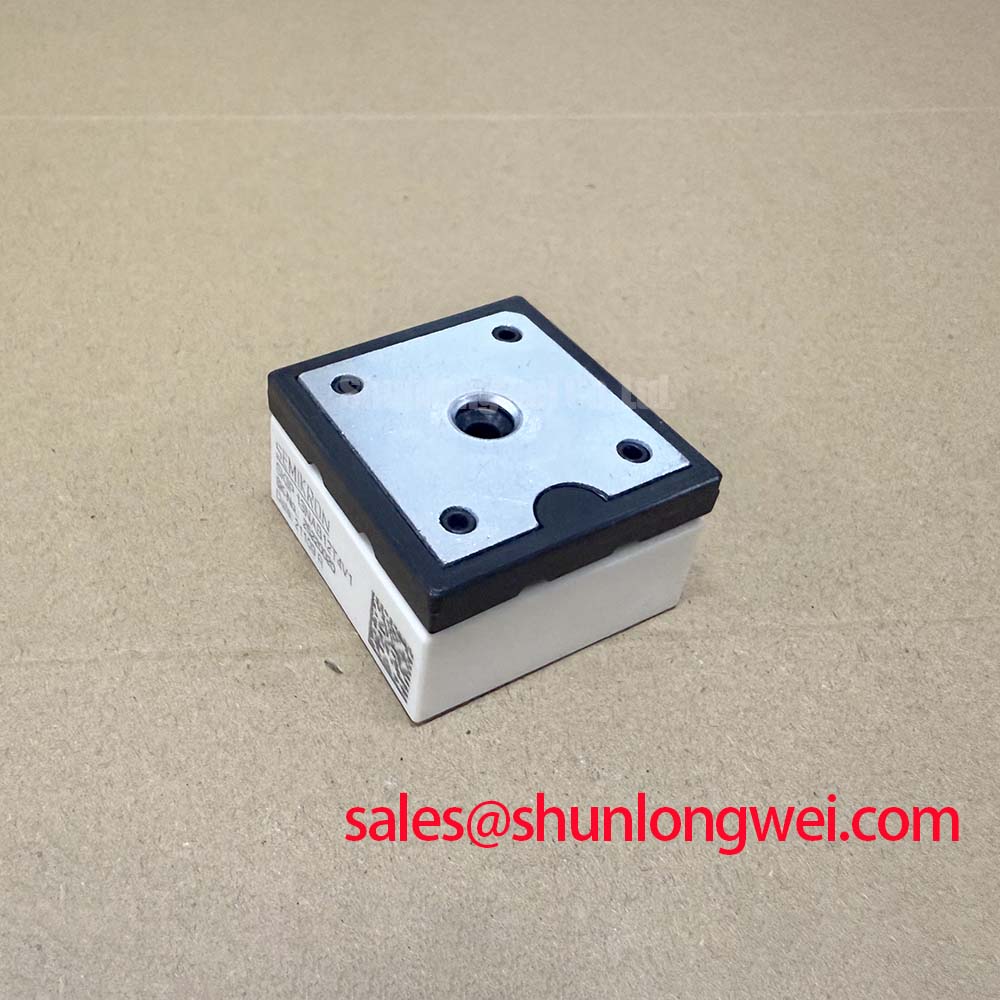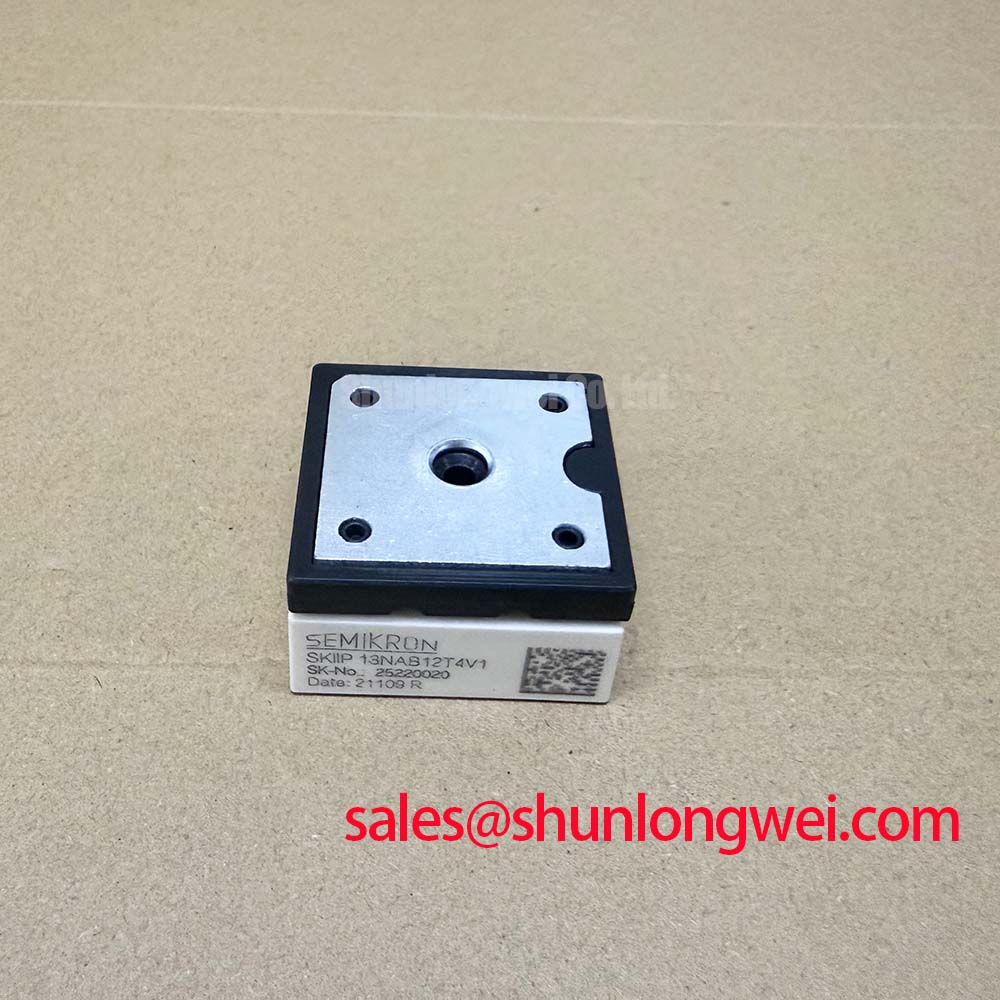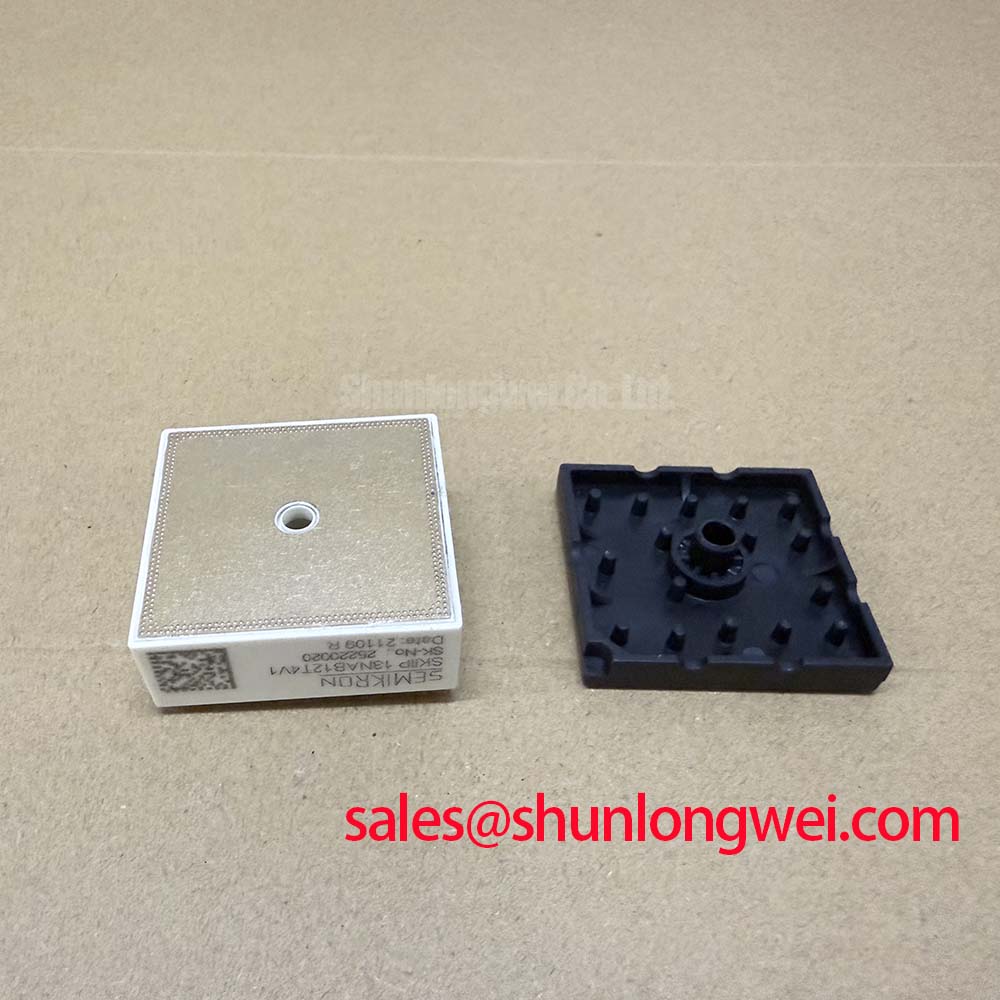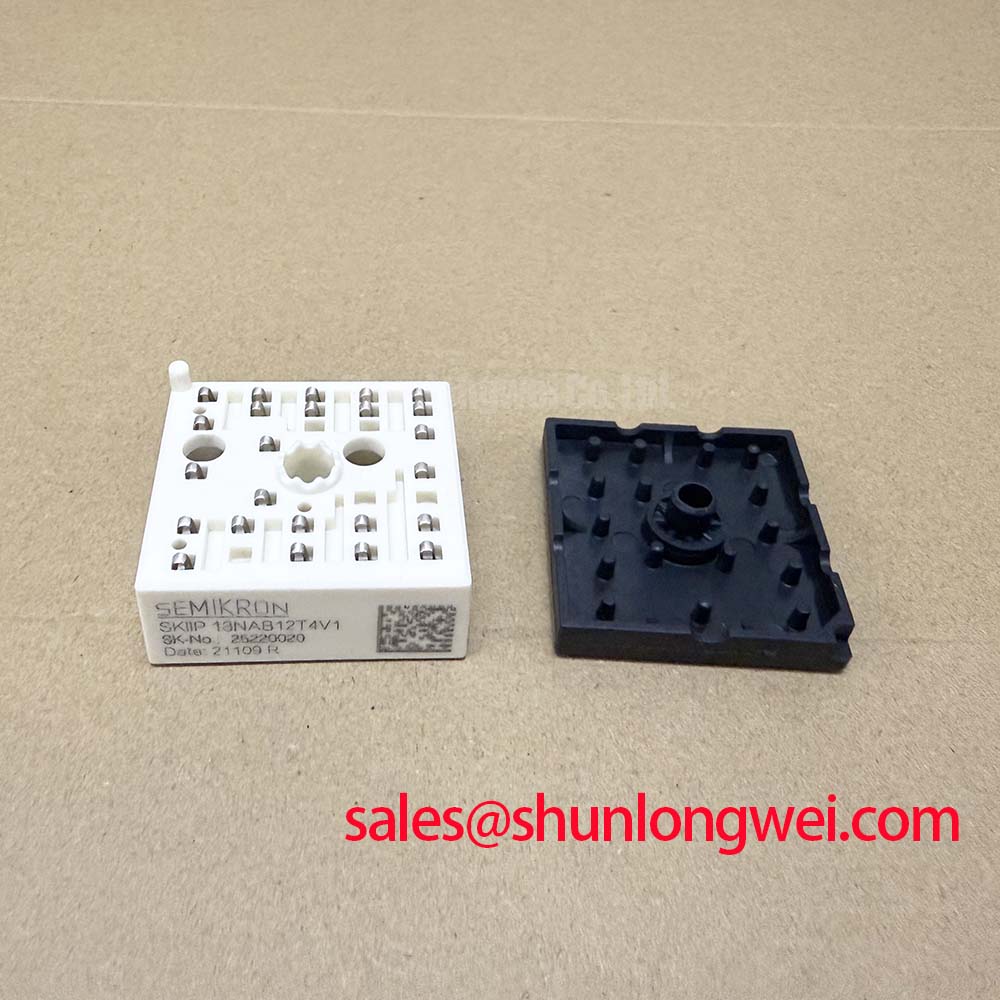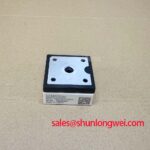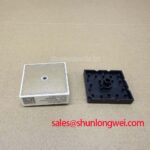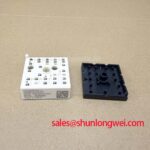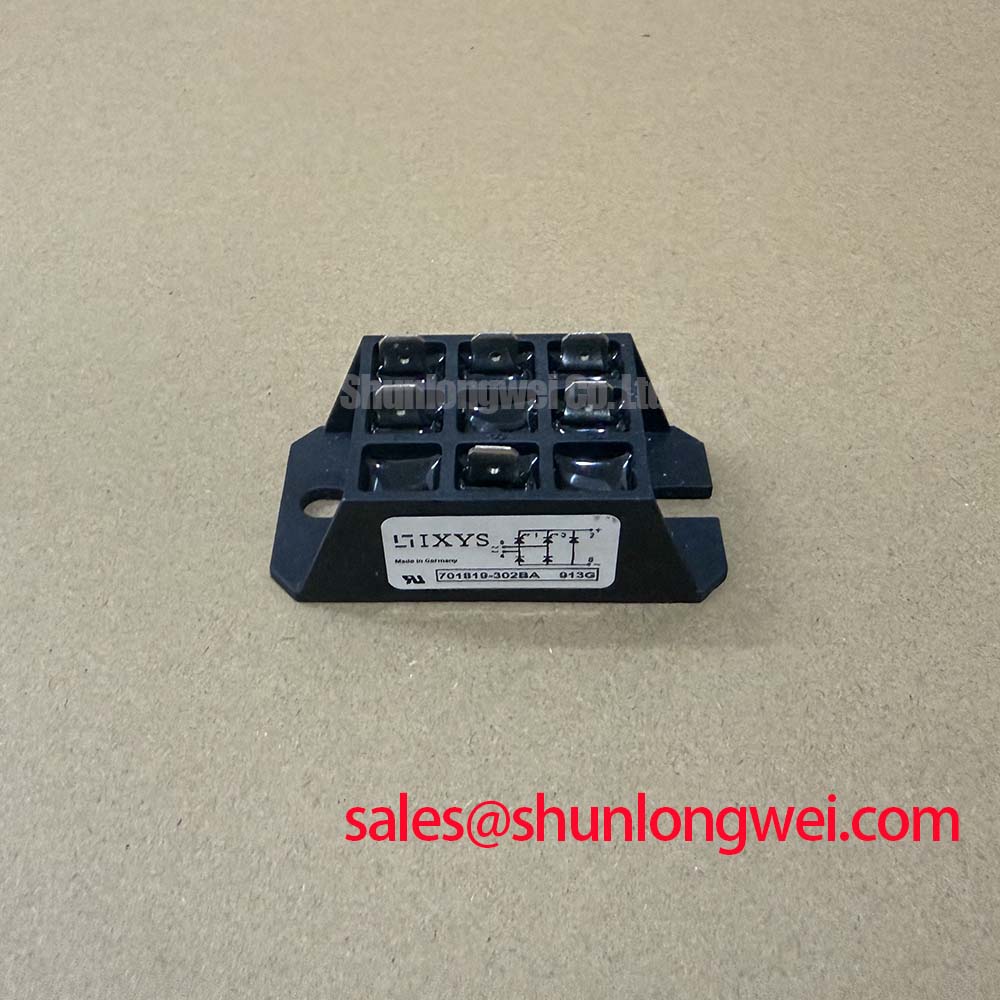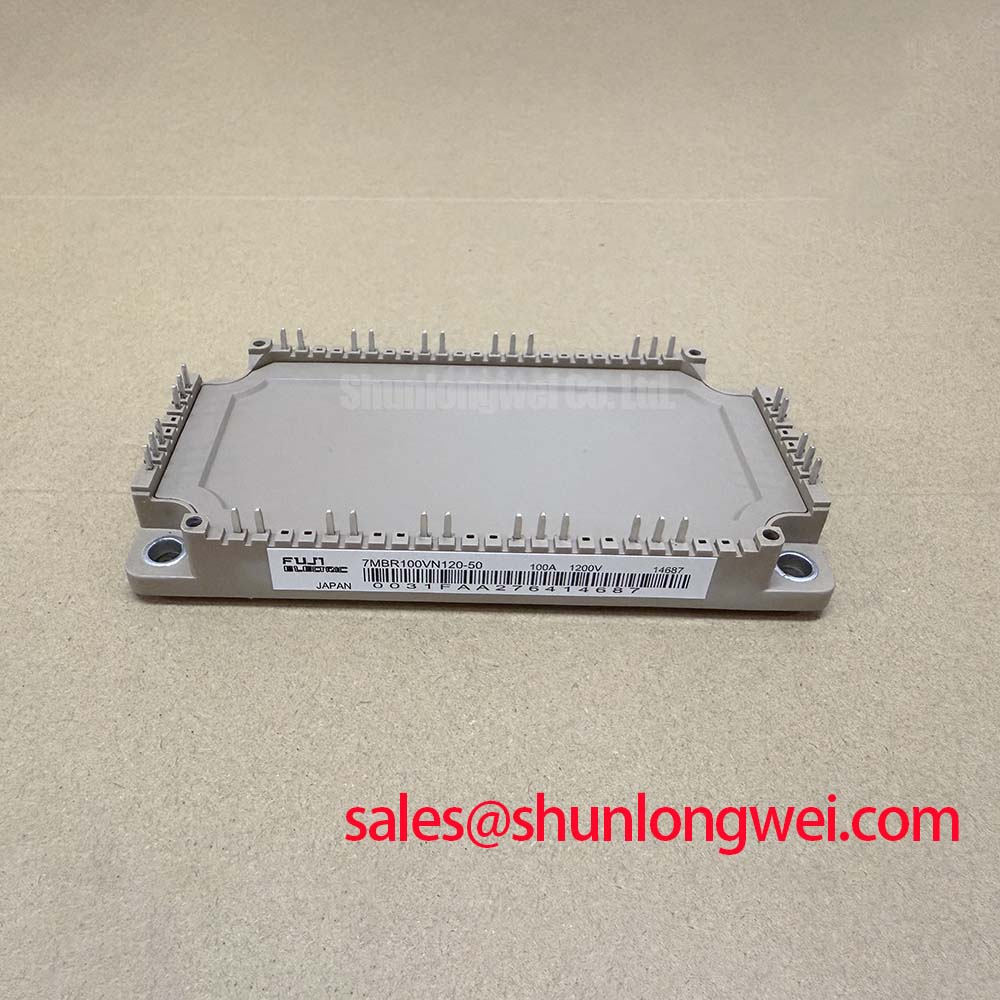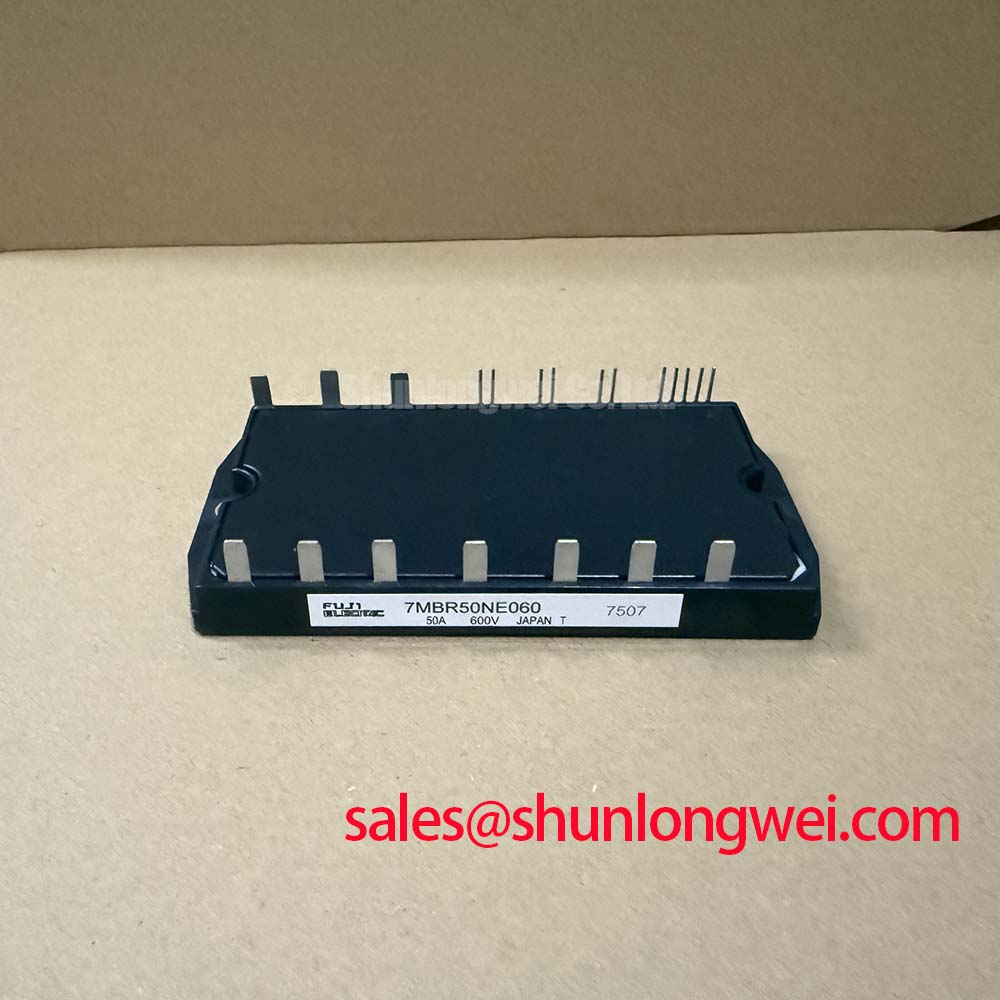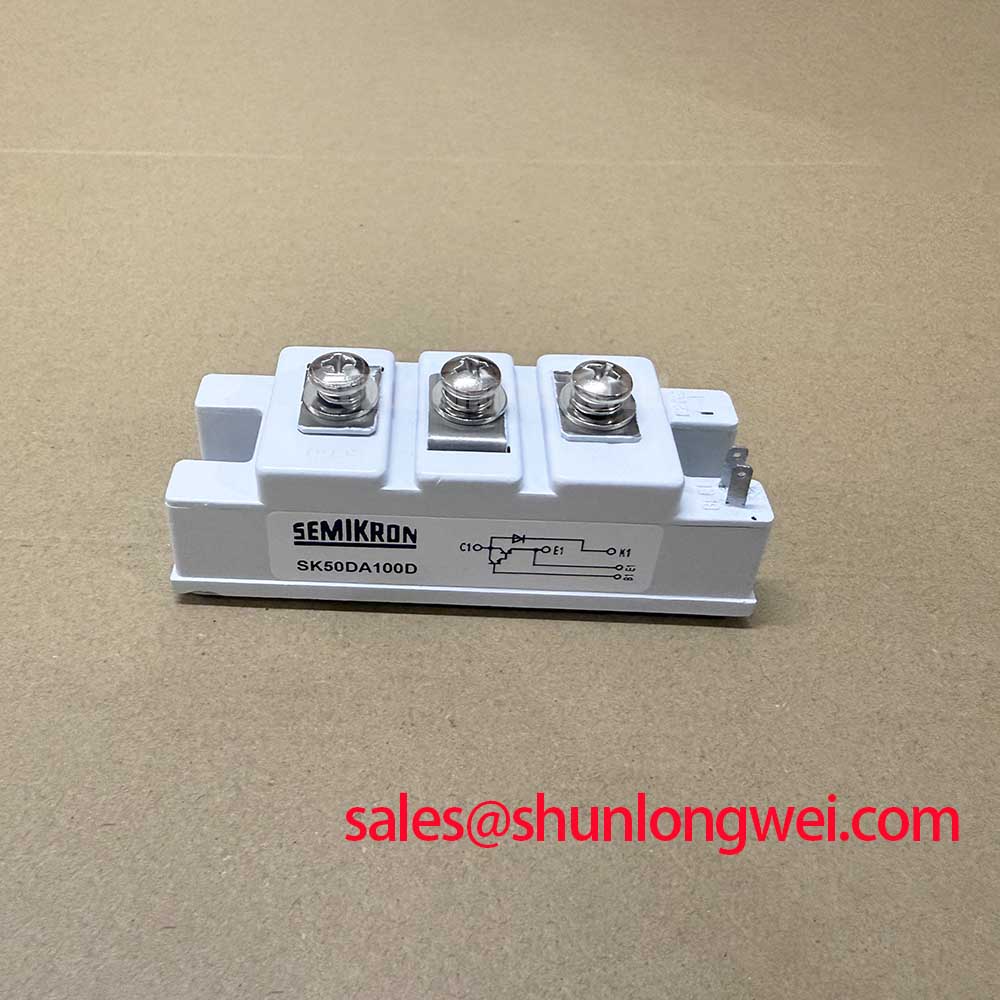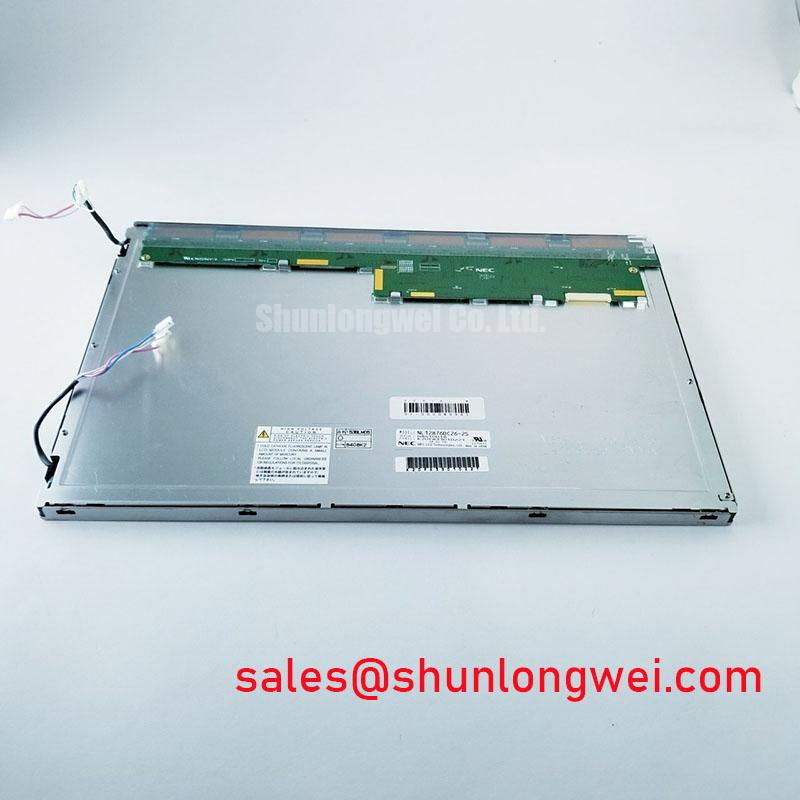SKiiP 13NAB12T4V1: Integrated 1200V IPM for Simplified Design
Product Overview
The SKiiP 13NAB12T4V1 is an integrated power stage that accelerates inverter design cycles by combining a 1200V/50A 3-phase bridge with a gate driver and solder-free mounting technology, simplifying assembly and enhancing long-term system reliability. This SEMIKRON Integrated Intelligent Power (SKiiP) module integrates Trench IGBTs and CAL freewheeling diodes to deliver a complete power conversion solution. How does solder-free mounting improve the reliability of an inverter? By creating a robust mechanical connection immune to thermal cycling fatigue, it eliminates a primary failure point associated with traditional soldered modules.
- Core Specifications: 1200V | 50A (ICnom) | VCE(sat) 1.9V (typ.)
- Key Benefits: Accelerated assembly process; Enhanced system longevity.
Application Blueprints: Where Integrated Design Excels
The SKiiP 13NAB12T4V1 is engineered for applications where reducing development time, minimizing physical footprint, and ensuring field serviceability are critical engineering goals. The module's all-in-one architecture provides a streamlined solution for a variety of power conversion systems.
- Variable Frequency Drives (VFDs): Its robust 3-phase inverter topology and integrated protection features are fundamental for precise and durable motor control in industrial automation, pumps, fans, and conveyor systems.
- Servo Drives: The integrated gate driver and current sensors enable the deterministic control required for high-precision motion control systems in robotics and CNC machinery.
- Renewable Energy Systems: The module can function as a core component in smaller-scale solar inverters and wind turbine pitch controllers, where reliability and power density are paramount.
- Uninterruptible Power Supplies (UPS): The compact and reliable design is well-suited for the inverter stage of commercial and industrial UPS systems, ensuring dependable power backup.
For industrial drives up to 22 kW, its integrated protection and solder-free design offer the most direct path to reliable, serviceable systems.
The Architecture of Simplified Power Electronics
The technical foundation of the SKiiP 13NAB12T4V1 is its high level of functional integration, which directly addresses common challenges in power stage design. How does the SKiiP 13NAB12T4V1 simplify assembly? It utilizes a solder-free pressure contact system for mounting, which establishes a direct, low-resistance thermal and electrical path to the heatsink.
Solder-Free Pressure Contact Mounting
A defining feature is the elimination of solder joints for the main power connections. This pressure contact system provides a uniform clamping force across the module base. This approach is analogous to a bolted industrial busbar connection, which is known for its mechanical strength and stable, long-term electrical contact, in contrast to a soldered connection that can become brittle and fail under repeated thermal stress. This technology not only simplifies the initial assembly but also makes field replacement significantly faster.
Integrated Intelligence and Protection
What is the main benefit of its integrated driver? It provides an optimized and protected gate control solution for the internal IGBTs. This integration includes critical protection functions such as Under-Voltage Lockout (UVLO) and short-circuit detection, safeguarding the power stage from potentially damaging operating conditions. Furthermore, integrated current and temperature sensors supply the essential feedback for the system's main controller, removing the need for external sensing components and their associated wiring and complexity.
Key Specifications for Rapid System Integration
The following parameters are central to the SKiiP 13NAB12T4V1's role in streamlining system design. These specifications, drawn directly from the datasheet, provide the essential data for engineering evaluation.
| Parameter | Value | Conditions |
|---|---|---|
| Collector-Emitter Voltage (VCES) | 1200 V | Tj = 25 °C |
| Nominal Collector Current (ICnom) | 50 A | - |
| Collector-Emitter Saturation Voltage (VCE(sat)) | 1.9 V (typ.) / 2.3 V (max.) | IC = 50 A, Tj = 25 °C |
| Total Power Dissipation (Ptot) | 330 W | Per IGBT, Tcase = 25 °C |
| Short Circuit Withstand Time (tpsc) | ≥ 10 µs | VCC = 800 V, VGE ≤ 15 V, Tj ≤ 150 °C |
| Operating Junction Temperature (Tj,op) | -40 to +150 °C | - |
For complete specifications, please refer to the official SKiiP 13NAB12T4V1 datasheet.
Datasheet-Driven Comparison for Informed Decisions
To support the system design and component selection process, this section provides a factual comparison based on key datasheet parameters. This information is presented to empower engineers in their evaluation without offering direct recommendations. For systems with different power requirements, the SKiiP35NAB12T4V1 provides a higher current rating within the same voltage class and technology family.
SKiiP 13NAB12T4V1 vs. Discrete IGBTs + External Driver
- Component Count & PCB Area: The SKiiP 13NAB12T4V1 integrates six IGBTs, six diodes, a gate driver, and sensing circuits into a single housing. A discrete solution requires over a dozen separate components, leading to a significantly larger PCB footprint and more complex layout routing.
- Design & Testing Effort: The integrated module's gate driver is pre-optimized for the IGBTs, eliminating the extensive engineering effort needed to design, tune, and validate a discrete gate drive circuit for optimal switching and protection.
- Assembly Process: The single-module, pressure-contact mounting of the SKiiP is a faster and more repeatable process than soldering multiple discrete power devices and their associated driver components.
This comparison highlights the trade-offs between integration and design flexibility. For more information on the fundamentals of IGBTs, our guide on The Engineer's Ultimate Guide to IGBT Modules offers further context.
Deployment Snapshot: A Case for Solder-Free Integration
Consider the manufacturing environment for a line of compact industrial VFDs. Production throughput and long-term field reliability are primary business drivers. The adoption of the SKiiP 13NAB12T4V1 can directly impact these metrics. The solder-free mounting process can reduce the power stage assembly time per unit. This efficiency gain, scaled across a production run, translates into higher output and reduced labor costs. More critically, the elimination of solder fatigue as a failure mode contributes to a lower field return rate, enhancing brand reputation and reducing warranty-related expenses over the product's lifecycle.
Technical Inquiries on the SKiiP 13NAB12T4V1
What are the practical benefits of using an IPM like the SKiiP 13NAB12T4V1 over discrete IGBTs and a separate driver board?The primary benefits are a significant reduction in design complexity and time-to-market. The integrated, factory-optimized gate driver ensures reliable switching and protection without the need for extensive engineering validation. This, combined with a smaller footprint and simplified assembly, streamlines the entire manufacturing process.
What is the recommended mounting procedure for the pressure contact system?The module requires a specific mounting torque applied evenly to ensure correct pressure distribution for both electrical and thermal contact. It is crucial to use a calibrated torque wrench and follow the sequence detailed in the manufacturer's application notes. The heatsink surface must also meet flatness and roughness specifications.
How does the integrated temperature sensor work?The module contains an NTC (Negative Temperature Coefficient) thermistor located close to the power chips. Its resistance changes predictably with temperature, allowing the system controller to monitor the module's thermal state. This feedback is essential for implementing thermal protection, derating strategies, and for predictive maintenance algorithms.
Can the SKiiP 13NAB12T4V1 be paralleled for higher current output?Paralleling Intelligent Power Modules requires careful consideration of electrical and thermal balancing. While technically possible, it is critical to consult the manufacturer's specific guidelines on paralleling SKiiP modules to ensure current sharing is balanced and to prevent oscillations. Often, selecting a single module with a higher current rating, such as the SKiiP35NAB12T4V1, is a more robust design approach.
Strategic Impact: Aligning with Advanced Manufacturing Trends
The design philosophy of the SKiiP 13NAB12T4V1 extends beyond its immediate technical specifications; it represents a strategic asset for equipment manufacturers navigating the demands of modern industry. The move towards highly integrated power solutions like this SKiiP® Technology module supports key initiatives such as modular product design and faster customization. By abstracting the complexity of the power stage into a single, reliable block, engineering teams can allocate more resources to developing value-added features like advanced control software and network connectivity. This approach not only shortens product development cycles but also builds a more resilient and adaptable manufacturing operation, capable of responding swiftly to evolving market requirements for smarter, more efficient industrial machinery. Further reading on IPM vs. Discrete IGBTs provides a broader perspective on this design choice.

